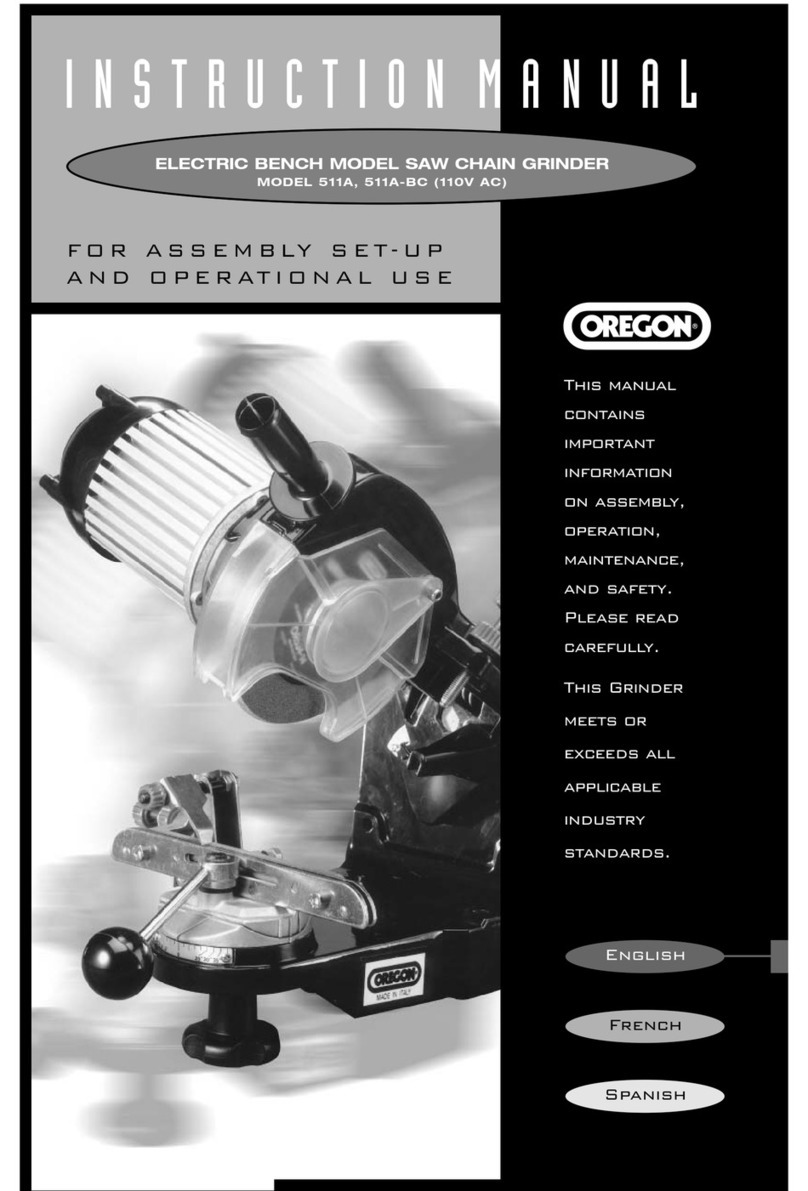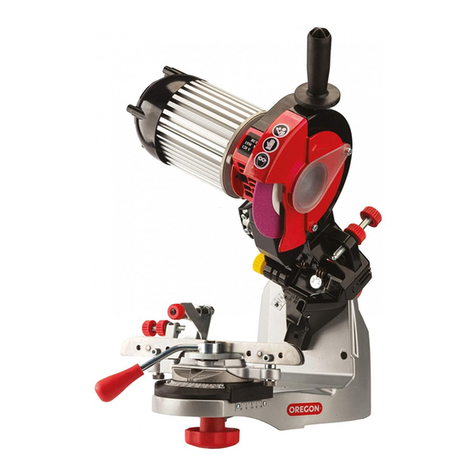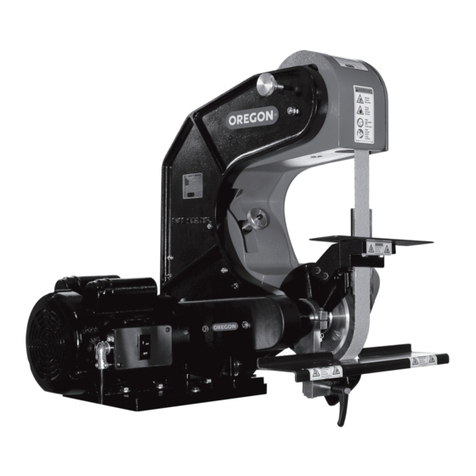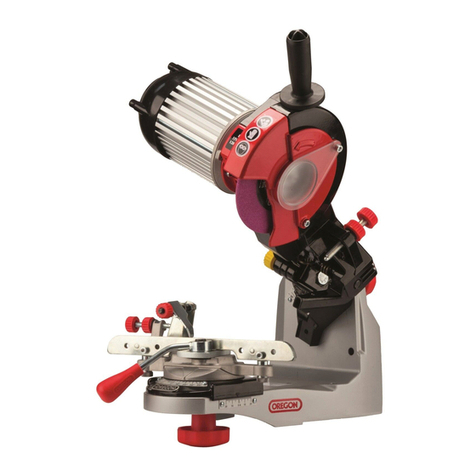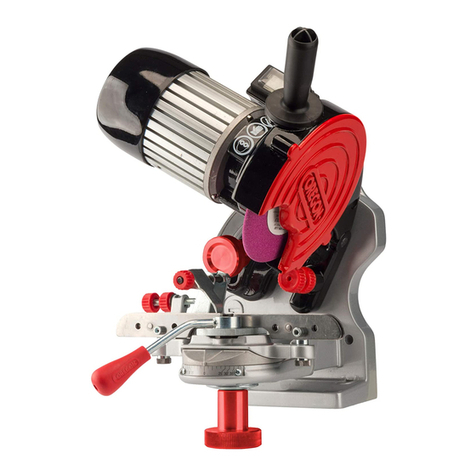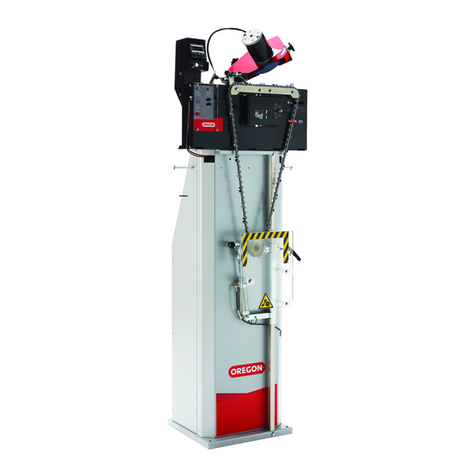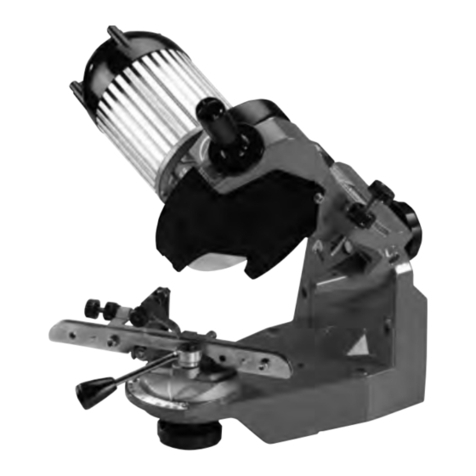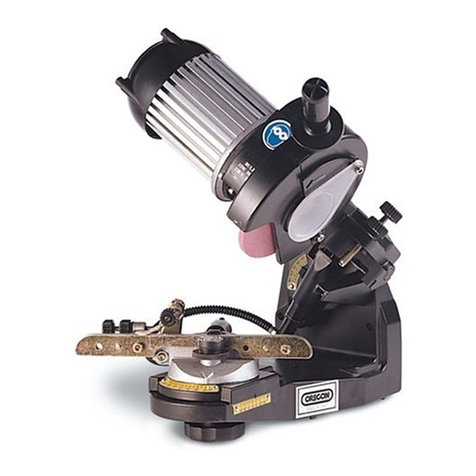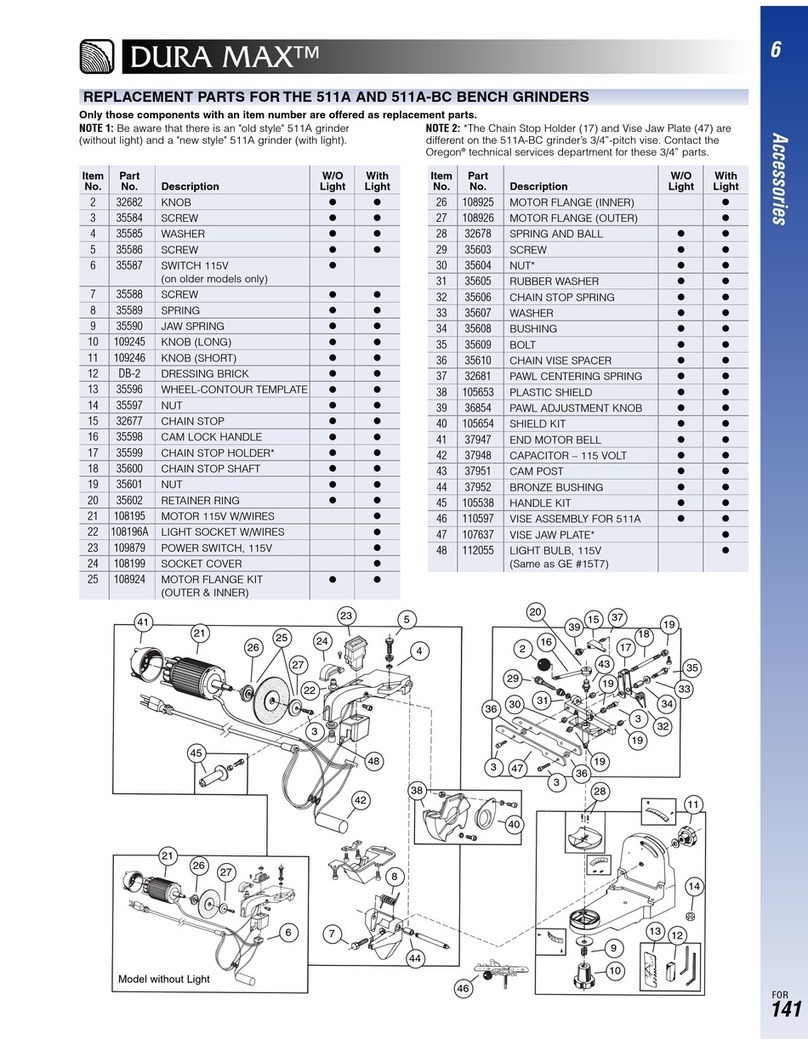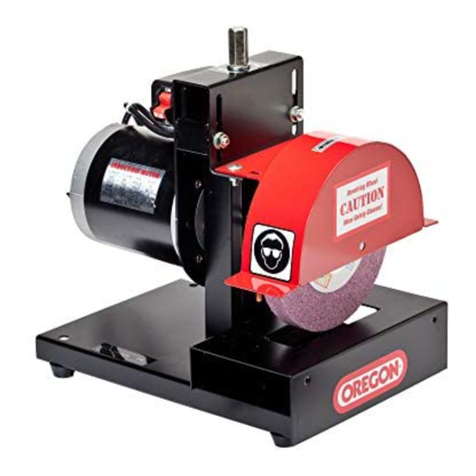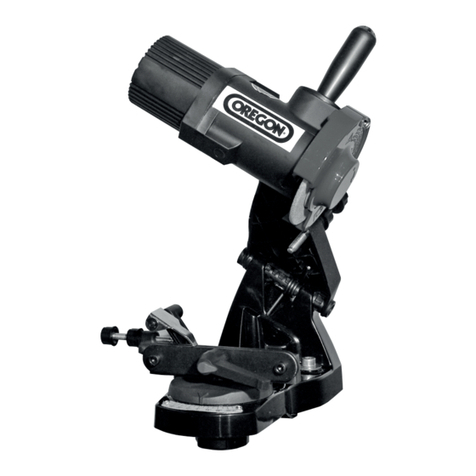INTRODUCTION
12. Keep work area clean. Cluttered areas and
benches invite accidents. Make sure that the working
area of the grinding wheel is free of tools or other
objects before starting up the grinder. Frequently
clean grinding dust from beneath the grinder.
13. Don’t use in a dangerous environment.
Don’t use power tools in damp or wet locations,
or expose them to rain. Be sure to keep the work
area well lighted.
14. Check the position of the power cord during
operation, making sure that it remains outside the
range of action of the grinding wheel and is not
under tension. Never operate in the vicinity of
other electrical cables/cords.
15. Make workshop child proof with padlocks and
master switches. Also, do not allow anyone but
the operator to touch the power cord or remain in
the close vicinity of the grinder while operating.
16. Always keep the hand-grips clean and dry.
17. Before starting the grinder, make sure that the
grinding wheel is correctly secured and positioned
in the up, rest position. Do not over-tighten the
wheel mounting flange nut.
18. Secure work. Make sure that the grinder is
secured as shown in Figures 1-3, page 6. Use the
vise to hold the chain. It frees both hands for mov-
ing the grind head/wheel down to grind the chain.
19. Don’t overreach. Keep proper footing and
balance at all times.
20. Never stand on an unstable platform.
Always work in a stable and safe position. Serious
injury could occur if the grinder is tipped or if the
cutting tool is unintentionally contacted.
21. Check for damaged parts. Before using the
grinder, check to make sure that all the devices,
those for safety and others, are in good working
order and free from any obvious damage that could
affect performance and safety/reliability during use.
22. Use recommended accessories. Consult the
owner’s manual for recommended accessories.
The use of improper accessories may cause risk
of injury. Use only flanges furnished with the
grinder. To guarantee the efficient and consistent
operation of your grinder, remember that any
worn or broken parts must be replaced using only
original spare parts.
23. Use only recommended grinding wheels, as
specified on page 13, table 2.
24. Check your grinder. Never work with a
damaged, poorly repaired, incorrectly fitted, or
modified grinder. Do not remove, damage, or
disable any safety devices.
25. Always use the right tool for the job. Never
use the grinder to cut or grind objects other than
saw chains. Don’t force grinder or attachment to
do a job for which it was not designed.
26. Maintain tools with care. Keep tools sharp
and clean for best and safest performance.
Follow instructions for lubricating and changing
accessories.
27. Never let your grinder be exposed to rain or
dampness.
28. Never use the grinder in an explosive or
flammable atmosphere.
29. Always consult your dealer for any clarification
or important maintenance or repair operation.
30. Never jerk the cable to disconnect it from the
outlet. Keep the cable/cord away from heat, oil,
and sharp objects.
31. Use proper extension cord. Make sure your
extension cord is in good condition. When using
an extension cord, be sure to use one heavy
enough to carry the current you will need to
perform your grinding operation. An undersized
cord will cause a drop in line voltage resulting in
loss of power and overheating. Table 1, page 8,
shows the correct size to use depending on cord
length and nameplate ampere rating. If in doubt,
use the next heavier gauge. The smaller the gauge
number, the heavier the cord.
3

